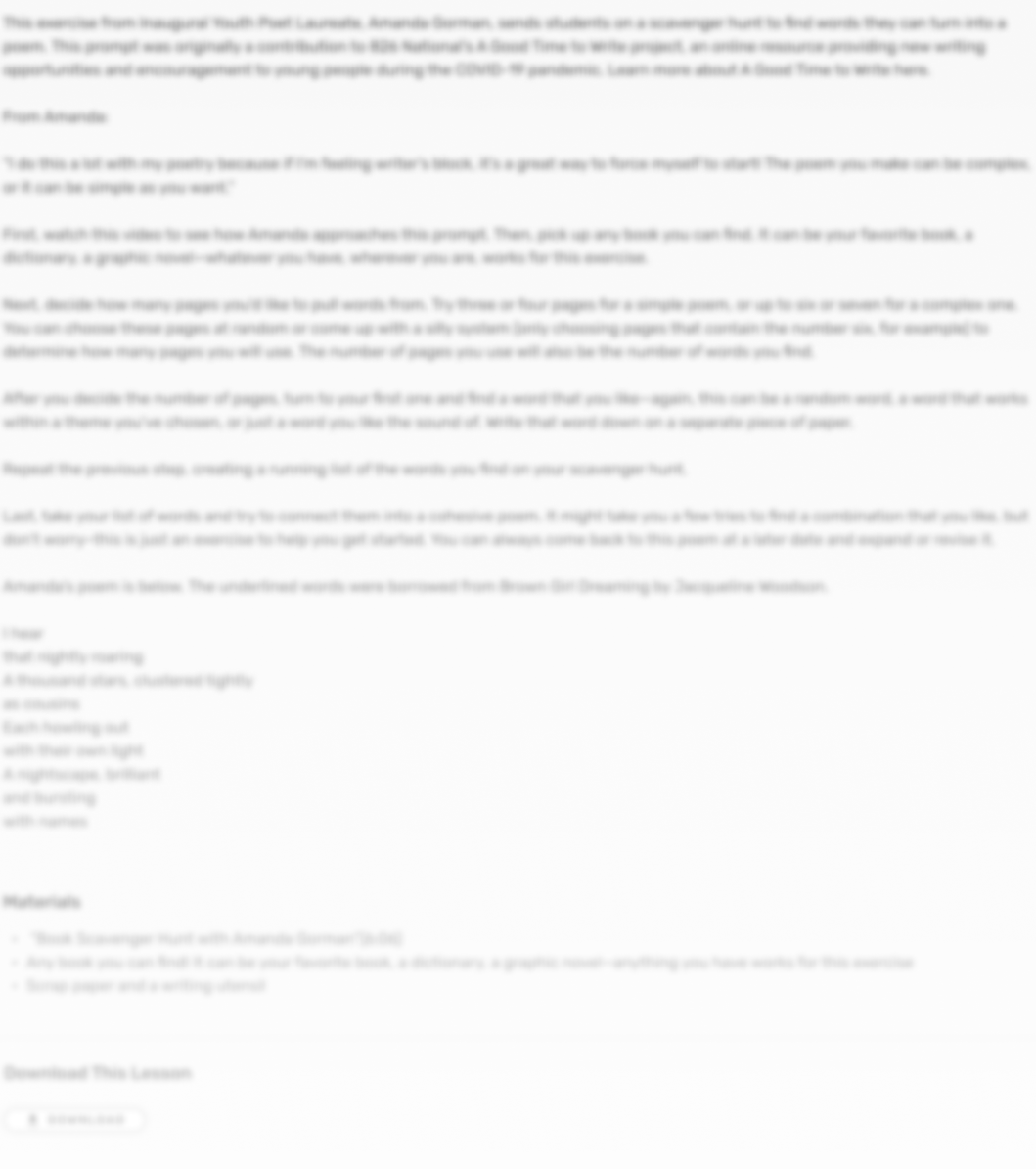
Write narratives to develop real or imagined experiences or events using effective technique, well-chosen details and well-structured event sequences.



Students will produce a short story that includes a setting in an alternate world.
STEP 1
Ask students to describe a place familiar to them– school, their neighborhood, a favorite place or person’s home etc.
STEP 2
Remind students what a setting is and use a mentor text of your choice to illustrate the importance of setting.
STEP 3
Ask students to identify how the author in the mentor text describes the setting. How does the author help the reader know what it’s like to be in the setting? Prompt students to think about sensory details and descriptive language.
STEP 4
Now tell students that as a way to do science fiction writing, authors describe worlds that are possibly real based on science but also made up by the authors imagination. Show students this video from 826DC.
STEP 5
Ask students to describe a setting described in the video. What type of animals or plants...
